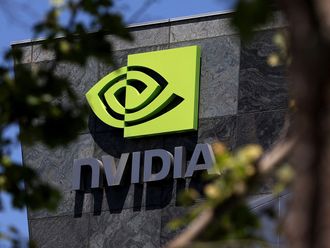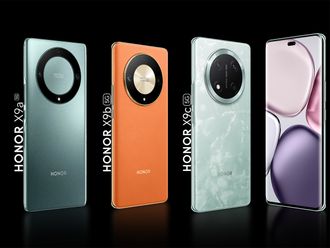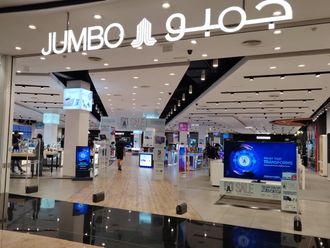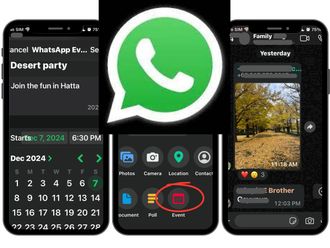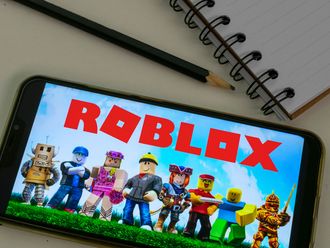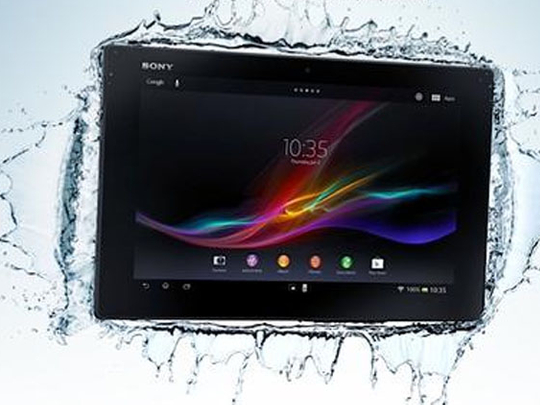
San Francisco: Once on the cutting edge of consumer electronics, Sony lost its mojo years ago. But every so often, it still comes up with something that reminds you of what it was, and maybe could be again.
Meet the new Xperia Tablet Z, the sleekest Android tablet ever. It’s ultra-thin, ultra-light, and it’s even waterproof.
Yes, waterproof. I left my test unit under a running faucet, dunked it in the sink and even watched a video in the shower. (Drawbacks: It was a little hard to hear the audio, and the touch screen sometimes interpreted splashes as finger swipes.) It came through with flying colors.
Now, the Xperia Z isn’t actually intended for underwater use, and neglecting to secure the tiny doors covering the power and memory-card ports could easily turn your expensive electronic bauble into a soggy, useless mess. (Sony takes pains to describe the Xperia only as “water-resistant.”) Still, it’s reassuring to know it will stand up to the occasional kitchen splash or spilled drink with no ill effects.
While the Xperia’s 10.1-inch screen puts it in the same class with Apple’s full-sized iPad, it’s both lighter - 1.09 pounds, versus 1.44 - and thinner. In fact, it’s even skinnier than an iPad Mini, which has a smaller screen.
Where the Xperia falls short is in the quality of its screen - its 1920 by 1200 resolution is nice enough, but doesn’t match Apple’s Retina display or Google’s Nexus 10 - and in battery life, about which more later.
But it stands up well against the best of the Android breed, including the Nexus and Amazon’s Kindle Fire HD, in almost every area except price.
The Xperia, which operates only over a Wi-Fi connection, costs $500 for a model with 16 gigabytes of storage, or $600 for 32 gigabytes. That’s the same as a comparable Wi-Fi-only iPad, but it’s $101 more than the Nexus, and $131 more than the Kindle.
The Sony tablet is powered by a quad-core Qualcomm Snapdragon microprocessor and runs the current “Jelly Bean” version of Google’s Android operating system. Performance was generally brisk, except for a noticeable lag when I turned the tablet sideways or upside down and the screen had to reorient itself.
The tablet also features a Near-Field Communication chip for sharing content at a tap with other NFC-equipped devices, as well as eight-megapixel rear-facing and two-megapixel front- facing cameras.
As many manufacturers do, Sony has layered its own user interface and apps over Android, though I found them considerably less annoying than some competitors’. Indeed, at least some of the bundled apps are downright useful and help make up for the continuing paucity of third-party software designed specifically for Android tablets.
My favorite was Remote, which takes advantage of the Xperia’s built-in infrared transmitter to turn it into a universal remote control for video gear. After a simple set-up process, I was able to successfully control a variety of devices, including Samsung, NEC and Panasonic TVs and set-top boxes from Comcast and DirecTV.
For owners of Sony’s Bravia TVs and Blu-ray players, a free app called TV SideView that’s available from the Google Play store integrates a colorful program guide with the tablet’s remote-control functions, finds content across multiple programming sources and provides an easy way to share what you’re viewing on Facebook and Twitter.
The biggest drawback to the Xperia, outside of its premium price, is the battery life. In mixed use, I averaged about six to seven hours on a charge if I was careful, far worse than the 11 hours I can get on an iPad over Wi-Fi.
Sony includes a power-saving mode it calls “Stamina” that begins shutting down data and Wi-Fi traffic when the screen’s off, but I regarded it as a poor substitute for the beefier battery the Xperia probably needs.
Then again, a bigger battery would add to its heft and girth, which would negate much of its charm. It’s a tradeoff, I guess.
The only other issue I had with the Xperia Z was how easy the screen picks up smudges and fingerprints. But there’s an easy remedy for that one: Just stick it under the faucet.



